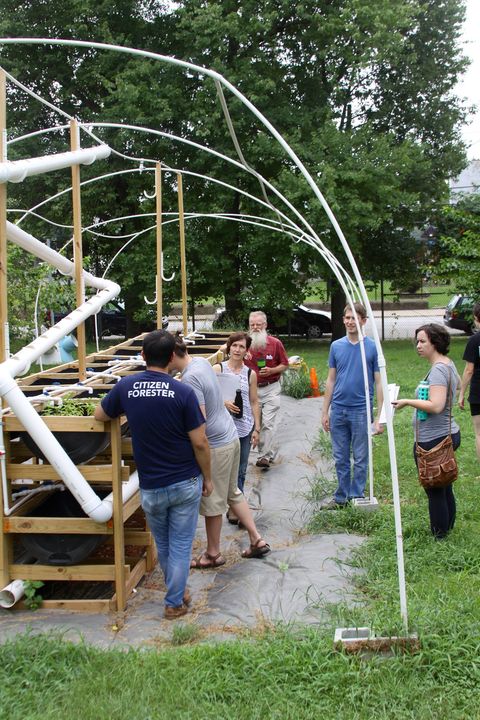
Urban Growers Series: Permaculture and Hugelkultur
Susana Lein from Salamander Springs will present on permaculture, and Timothy Kercheville will lead a workshop on hugelkulture. December 10 at 460 Northwestern Pkwy. 10am-4pm. $20 suggested donation, breakfast and lunch provided.
WHAT IS HUGELKULTUR?
Hugelkultur is a German word, and this agricultural concept simply means “making raised garden beds filled with rotten wood. This makes for raised garden beds loaded with organic material, nutrients, air pockets for the roots of what you plant, etc. As the years pass, the deep soil of your raised garden bed becomes incredibly rich and loaded with soil life. As the wood shrinks, it makes more tiny air pockets – so your hugelkultur becomes sort of self tilling. The first few years, the composting process will slightly warm your soil giving you a slightly longer growing season. The woody matter helps to keep nutrient excess from passing into the ground water – and then refeeding that to your garden plants later. Plus, by holding SO much water, hugelkultur could be part of a system for growing garden crops in the desert with no irrigation.”
(source: https://richsoil.com/hugelkultur/)
WHAT IS PERMACULTURE?
“The ultimate purpose of permaculture—a word coined in the mid-1970s by two Australians, Bill Mollison and David Holmgren—is to develop a site until it meets all the needs of its inhabitants, from food and shelter to fuel and entertainment. While it’s the rare home gardener who can follow permaculture principles to the ultimate degree, most can borrow ideas from the permaculture ethos with landscaping techniques based on production and usefulness.
Permaculture emphasizes the use of native plants or those that are well adapted to your locale. The goal here is to plant things you like, while making sure they have a purpose and benefit the landscape in some way. Plants such as fruit trees provide food as well as shade; a patch of bamboo could provide stakes for supporting pole beans and other vining plants. Permaculture gardeners grow many types of perennial food plants—such as arrowhead, sorrel, chicory, and asparagus—in addition to standard garden vegetables.
Like all gardeners, permaculture enthusiasts love plants for their beauty and fragrance, but they seek out plants that offer practical benefits along with aesthetic satisfaction. Instead of a border of flowering shrubs, for instance, a permaculture site would make use of a raspberry or blackberry border.
Disease-prone plants, such as hybrid tea roses, and plants requring a lot of water or pampering are not good permaculture candidates. Choose a native persimmon tree that doesn’t need spraying and pruning, for example, instead of a high-upkeep peach tree. Consider the natural inclinations of your site, along with the needs of its inhabitants, and put as much of your site as possible to use. Work with the materials already available rather than trucking in topsoil or stone. And remember that a permaculture design is never finished because the plants within a site are always changing.”
(source: http://www.rodalesorganiclife.com/garden/permaculture-101)
Want to learn more about how to implement these agricultural concepts into your landscape design, garden, farm, or life? Sign up for our workshop at the eventbrite page here: https://www.eventbrite.com/e/urban-growers-series-permaculture-and-hugelkultur-tickets-29123489140

Leave A Comment